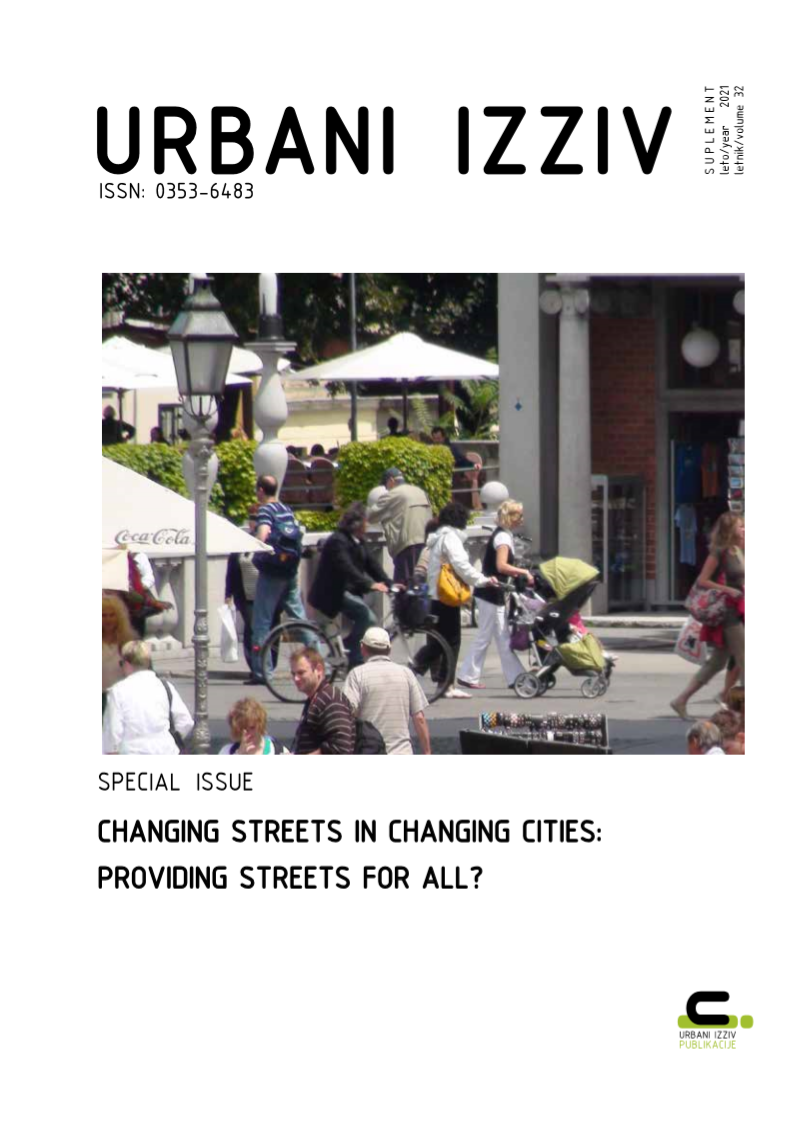 Content
Content
Figures

Figure 1: Figure 1: Trieste: the fourth proposal for the renewal of Sant’Antonio Square (source: Studio Bradaschia, Municipality of Trieste, 2019).

Figure 2: Figure 2. Grado: a) the redesign of spaces in between sports equipment and the streets; b) 30 km/h streets (source: research documentation of Proactive City, University of Trieste, 2019).

Figure 3: Figure 3: Regional software platform: map of intervention areas, with reference to existing public spaces and facilities, and their potential connections (source: research documentation developed by the Universities of Trieste and Udine, and the Region F
Urbani izziv Volume 32, No. supplement, December 2021
: 7-21
(Articles)
doi: 10.5379/urbani-izziv-en-2021-32-supplement-1
Author
Elena Marchigiani
Department of Engineering and Architecture, University of Trieste
emarchigiani@units.it
Barbara Chiarelli
Department of Engineering and Architecture, University of Trieste
barbara.chiarelli@phd.units.it
Ilaria Garofolo
Department of Engineering and Architecture, University of Trieste
ilaria.garofolo@dia.units.it
Title
Spatial accessibility as a driver to build an inclusive and proactive city
Abstract
Abstract Providing the largest number of persons the possibility to actively move and contribute to their own well-being also depends on the spatial accessibility to urban environment. From this perspective, the present article addresses two main questions: to what extent can the physical arrangement of public spaces play a key role in enabling individuals' capabilities to lead a healthy life, and how can accessibility affect urban regeneration. Accessibility is here understood as a fundamental right of citizenship and as a prompt to set the reflection on sensorial/cognitive/motor disabilities within a broader frame, covering many fields of urban agendas: social justice and health, sustainable mobility and Universal Design, and nature-based solutions. COVID-19 distancing measures have further emphasized the importance of these issues, stressing the need to make urban spaces walkable and usable for the most vulnerable citizens. The research Proactive City, developed at the University of Trieste (IT), offers input into this debate. The outcomes of design workshops in the Italian region Friuli Venezia Giulia, as well as of collaboration activities with the Regional Administration, provide technical and methodological recommendations to rethink “accessibility for all”, not as synonymous with special solutions addressed to persons with disabilities but as an overall approach to envisaging any urban transformation and policy.
Key Words
inclusion, accessibility for all, Proactive City, urban regeneration, COVID-19 pandemic